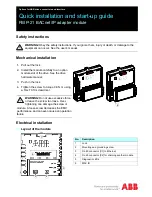
SCSI ID Setting
Each SCSI device located on the SCSI bus must be set to a
unique SCSI ID (0-7). The SCSI ID serves two purposes: it
uniquely defines each SCSI device’s address, and it determines
the device’s priority on the bus during arbitration phase. The arbi-
tration phase determines which device will own the bus when two
or more devices simultaneously request to use it. SCSI ID 7 has
the highest priority, and SCSI ID 0 has the lowest. When select-
ing the SCSI ID, consider the following:
•
The default value for your host adapter is SCSI ID 7
•
You only need to change a device’s SCSI ID if it conflicts
with the SCSI ID of another device or another host
adapter (assuming they are on the same SCSI bus)
•
If you are installing more than one SCSI host adapter,
each host adapter may be set to the same SCSI ID
(assuming they are on separate SCSI busses)
•
SCSI IDs 0 and 1 are best reserved for SCSI hard disk
drives
•
SCSI ID 0 is best reserved for the SCSI hard disk drive
that will be used as you computer’s boot device
•
SCSI ID 1 is best reserved for a second hard disk drive
•
SCSI ID 2 is often used for tape devices
Refer to Chapter 3, Configuring the Host Adapter for instructions
on changing the SCSI ID for the host adapter.
The SCSI ID on most SCSI devices is typically set with jumpers
or with switches on the SCSI device. Refer to the SCSI device doc-
umentation for information on changing the SCSI ID on other
SCSI devices.
Adaptec AHA-2740 Series User’s Manual
Stock Number: 510381-00 / Rev. C (Page 2-12)
Print Spec Number: 491709-00 Rev C
Current Date: 9/1/93 ECN Date: 9/14/93
AHA-2740 Series User’s Manual
2-12
















































